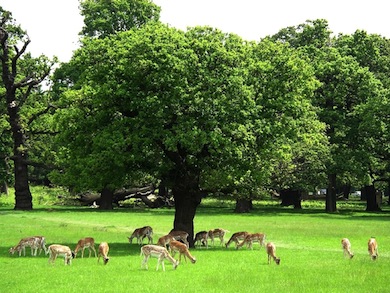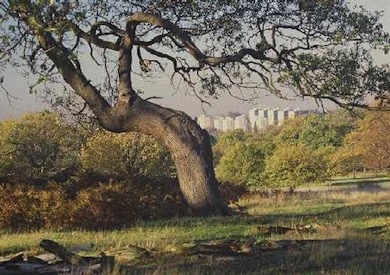Richmond Park is the largest Royal Park and has existed in its current form since 1697 when Charles I enclosed it for hunting deer. Over the centuries deer have continued to shape the way the park looks and develops. Roughly 350 red deer and 300 fallow deer still live in the park today.In addition to Richmond Park itself this site also includes Sudbrook Park and Richmond Park Golf Courses, as well as Ham, Petersham, Sheen and Palewell Commons. Together, these form a vast area of high quality wildlife habitats. Acid grassland is the most extensive, as well as woodland (ancient and plantation), and a variety of wetlands (including the Beverley Brook).Richmond Park is London’s largest Site of Special Scientific Interest, and is also a National Nature Reserve and a Special Area of Conservation (EU Habitats Directive). Richmond Park won a Green Flag Award again in 20089. Richmond Active Living Scheme, and Kingston and Wandsworth Health Walks projects use this site – all Walking the Way to Health (WHI) schemes; see links for details.
Local Wildlife Site
Accessible Sites of Importance for Nature Conservation
Richmond Park and associated areas
Borough: Richmond upon Thames
Grade: Metropolitan
Access: Free public access (all/most of site)
Area: 1066.85 ha
Description
Wildlife
The acid grassland includes both dry and damp areas. These support numerous uncommon plants, including upright chickweed, blinks and subterranean clover. The great many ancient pollarded oaks on the site are of immense historical and ecological importance. The standing and fallen dead wood supports a complex interwoven community of fungi (over 250 species recorded), insects, birds and other animals. The beetles are of particular importance, with over 1350 species known to occur here. Probably the most familiar of these is the stag beetle, of which there is a very strong population. The trees themselves shelter many birds - in fact, 144 species of birds have been noted over the last decade. Those breeding in the park include kestrel, hobby, sparrowhawk, tawny and little owls, the three British woodpeckers and woodcock. There are over 525 species of moth, including the uncommon double-line and one of our largest, the emperor. Butterflies include purple hairstreak, small heath, meadow brown and three species of skipper.The ponds, ditches and the Beverley Brook support many locally uncommon plants, including ivy-leaved crowfoot. They are also home to a range of waterfowl and an extremely diverse insect population. Bitterns are now regular on Pen Ponds in winter.The adjacent commons and golf courses provide additional areas of acid grassland and regenerated woodland.Facilities
Information (including educational facilities at Holly Lodge for those with special needs); car parking; toilets (including some with disabled access); nature trails; playground; cafe; refreshments; horse riding; cyclingwalking track around the park.
Fallow deer grazing in Richmond Park © Nigel Reeve/Royal Parks Agency

View towards Roehampton with an ancient oak © Peter Wakely/English Nature
Feedback
Have a question or a comment for this site, or notice anything missing or out of date? Please contact us.
